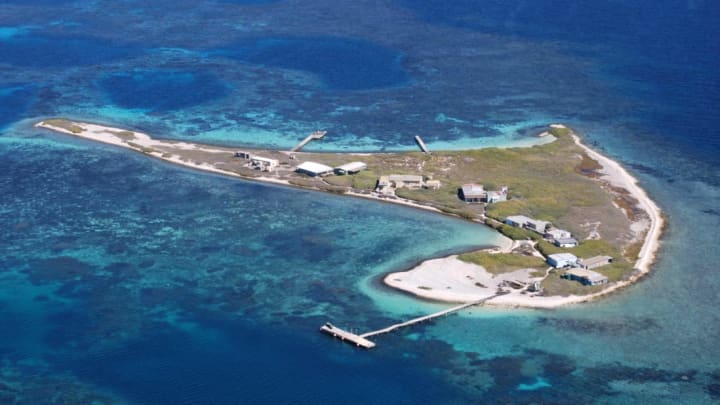The cargo ship Batavia set out from the Netherlands in October 1628, bound for the Dutch colony at present-day Jakarta, Indonesia, with more than 300 crew and passengers. For some still-unknown reason, the ship veered off course to the south and smashed into a coral atoll about 50 miles west of the Australian coast.
What happened over the next few months—culminating in a mysterious and brutal massacre that left at least 125 people dead—is Australia's oldest cold case.
In a story that aired on 60 Minutes Australia, correspondent Liam Bartlett traveled to this "island of horror" where a team of Australian and Dutch scientists is uncovering the nearly 400-year-old skeletons, well preserved in the sand of what is now Beacon Island. They hope to discover what led to the sudden mass slaughter of adults and children.
"We're dealing with a psychopath and some pretty horrible events," Alistair Paterson, an archaeologist at the University of Western Australia and the leader of the research team, tells Bartlett. "There's nothing like it in Dutch history or Australian history."

The Batavia, the flagship of the Dutch East India Company, was on its maiden voyage. The commander, Francisco Pelsaert, and the captain, Ariaen Jacobsz, detested each other. Jacobsz conspired with Pelsaert's deputy, Jeronimus Cornelisz, to take control of the ship and its load of silver and valuable paintings. But before the mutiny could unfold, the ship crashed into the reef in the early morning of June 4, 1629.
About 100 people died in the wreck, while almost 200 made it to a cluster of islands in the Abrolhos chain—treeless, desert-like stretches of sand without water or food. Pelsaert and Jacobsz sailed for help, hoping to reach their original destination nearly 2000 miles away by boat.
The events of the next three months continue to puzzle and horrify modern researchers. Initially, Jeronimus Cornelisz organized food rations and shelter for the survivors on Beacon Island as a way to cement his leadership. But then, he hoarded the weapons and boats for his own use. He ordered his followers to execute the strong, able-bodied men who could pose a threat to his control over the group. Most of the women and children who would be a drain on supplies were also killed, though some women were kept alive as sexual slaves, Bartlett reports.
"Totally Lord of the Flies," Paterson says.

Cornelisz marooned several men on a nearby island to get them out of the way as the killing rampage continued. But those men, led by a sailor named Wiebbe Hayes, managed to find water and food, and made a primitive protective fort of stone slabs—which still exists as the first European-made structure on Australian soil. In early August, two months after the wreck, Cornelisz and his men attempted to storm Hayes' stronghold and eliminate his band of survivors.
At the last moment, a rescue ship helmed by Pelsaert and Jacobsz appeared on the horizon. Both Hayes and Cornelisz sent out boats to intercept the ship, hoping to establish their version of events as fact and save themselves from punishment. Fortunately, Hayes's men reached the ship first.
Only 80 to 90 survivors out of the Batavia's 300-plus passengers eventually arrived in present-day Jakarta. Cornelisz, who never showed a hint of remorse or offered an explanation for his brutality, was hanged along with his co-conspirators. The bones of his victims, preserved in the island's alkali coral sand for almost four centuries, are now revealing clues to the historical mystery.
"Horrible things happened to these individuals. They clearly were victims," Paterson tells Bartlett. "But the archaeology allows us to get their story told."
